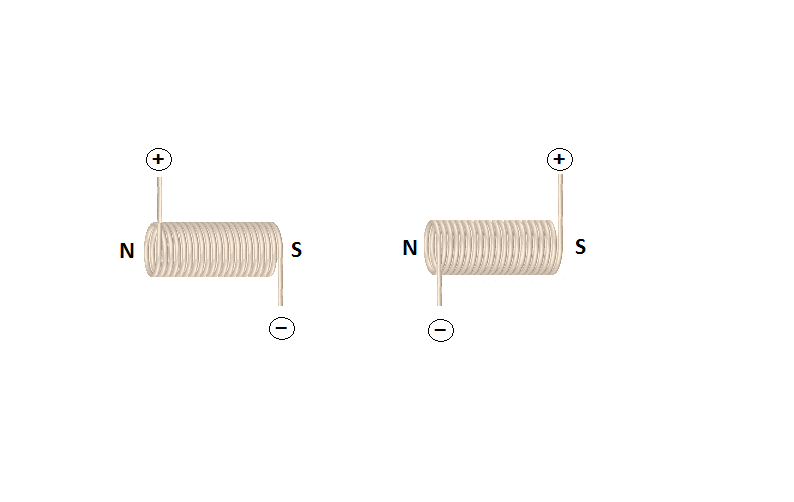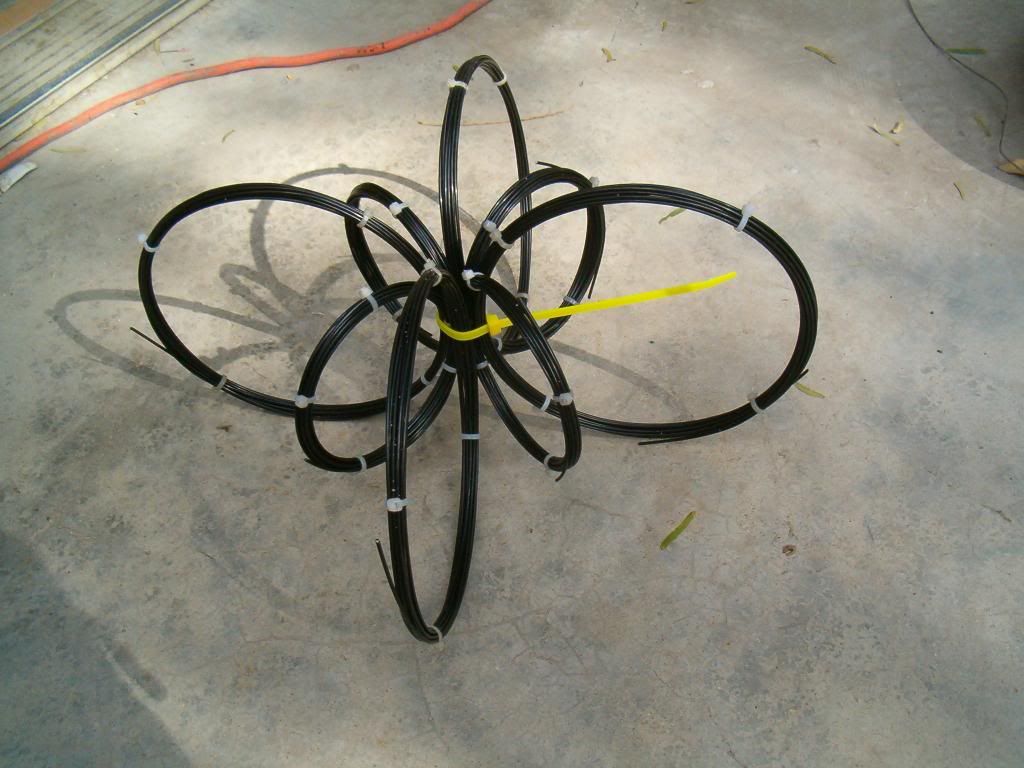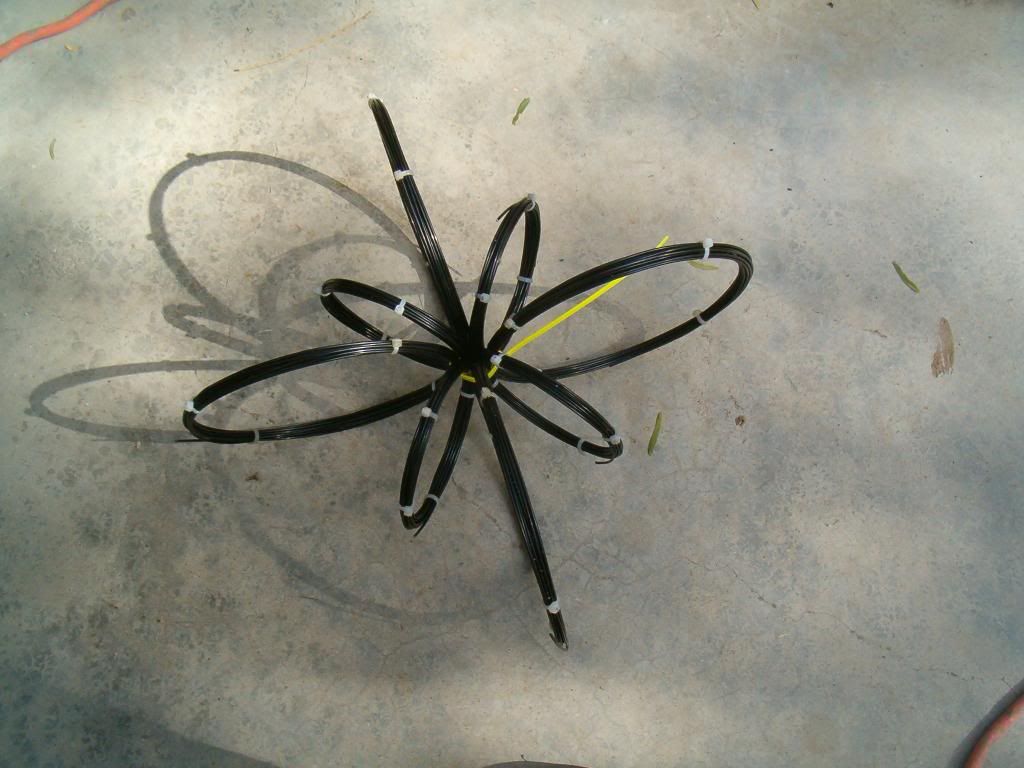Originally posted by Dave45
View Post
Announcement
Collapse
No announcement yet.
Bi-toroid Transformer of Thane C. Heins
Collapse
X
-
So i had an idea for a bitt. I have a laminated core from a 3 phase transformer. The three legs of the core are equal size. I was thinking of splitting some laminations off and shifting them over so that the first leg would now be narrower and the second two would be the same size as they were to start. The extra would just hang over, unless i cut them off entirely.
Being its a 3ph transformer having equal size legs the laminations can just be shifted. But does it really have to be a 10:1 reluctance ratio? I'm not sure how much power you can pull from a core that size. If i made it 10:1 the primary leg would be 5mm x 30mm. Compared to 30mm x 50mm. I don't really want to build it for mW power. The size of the core is pretty decent(150mm x 50mm). Should be able to make some usable power. Any advice on this idea?Attached Files
Comment
-
Hi pmazz850,
My understanding on magnetic circuits is that reluctance can be controlled by introducing air gaps with controlled gap sizes i.e. the higher the distance between the facing surface areas the higher the reluctance is. And it makes very little difference when you have a core with a permeability of 100,000 and you make a certain airgap in it and then you have a core with a permeability of 5000 and you introduce the same size air gap: the result is pretty much the same from reluctance point of view (provided the core sizes mechaniclly are much the same for the two cases).
So I do not think you have a drawback right now with not having two cores with much differing permeabilities, you can control rluctance by cleverly choosing air gap distances. Unfortunately you have to be precise to at least 1/10 or 1/5 mm in controlling the gap and the facing surface areas would better be smooth, ideally. Nonmagnetic spacers can be chosen in advance with some thicknesses to keep up with gap control.
Gyula
Comment
-
I just don't understand why if someone was trying to make a very efficient transformer they would want to add air gaps at all. My understanding of the principal is thicker core equals less reluctance just as thicker wire equals less resistance.
Comment
-
Hi zardox,
It is okay what you say, I agree but the reason I mentioned air gap is that by using it cleverly when the cores are not much different in permeability it may help for achieving the phenomena this so called bi-toroid transformer setup is supposed to manifest. I should have written in my previous post that the smaller the air gap introduced the less loss happens. A certain tradeoff is to be chosen when similar permeability cores are used.
Thanks, Gyula
Comment
-
new video
here are my measurments using my Velleman HPS140 scope
41 Don Smith Device Project: BiToroid Input/Output Testing - YouTube
input
1.97v @ 20ma
(20mv across 1 ohm)
----39.4mW
output
9.28v @ 56.3ma
(563mv across 10 ohm)
----522mWIn the beginner's mind, there are many possibilities.
In the expert's mind there are few.
-Shunryu Suzuki
Comment
-
Hi Mr Clean, For the output, the voltage across the load resistor is the voltage to multiply the
current by. If the 10 Ohm resistor is the only load across the secondary then
you measure the voltage across the 10 Ohms 0.563, divide by the resistance
10 ohms to get 0.0563 then multiply that by the voltage across the load resistor 0.563 = 31 mW.
Where exactly did you measure the 9.28 volts at ? Is the resistor the only load.
You didn't show where you connected the probe to measure the 9.28 volts. If
the 10 Ohm resistor is the only load on the secondary then your output is about 31 mW.
Input looks to be about 40 mW. That is assuming the 10 Ohm load resistor is the
only load on the secondary measured.
CheersLast edited by Farmhand; 11-26-2012, 08:04 PM.
Comment
-
i dont see how it could be more clear, the 9.28v was measured just like you would measure voltage in primary, while the resistor was in place i measured volts across end of secondary around to the beginning of the resistorOriginally posted by Farmhand View PostHi Mr Clean, For the output, the voltage across the load resistor is the voltage to multiply the
current by. If the 10 Ohm resistor is the only load across the secondary then
you measure the voltage across the 10 Ohms 0.563, divide by the resistance
10 ohms to get 0.0563 then multiply that by the voltage across the load resistor 0.563 = 31 mW.
Where exactly did you measure the 9.28 volts at ? Is the resistor the only load.
You didn't show where you connected the probe to measure the 9.28 volts. If
the 10 Ohm resistor is the only load on the secondary then your output is about 31 mW.
Input looks to be about 40 mW. That is assuming the 10 Ohm load resistor is the
only load on the secondary measured.
Cheers
i couldve sworn that Gyula said that there are 2 places to measure secondary, across supply with resistor in-line, and then across resistor?In the beginner's mind, there are many possibilities.
In the expert's mind there are few.
-Shunryu Suzuki
Comment
-
Hi Mr Clean, The main thing is to understand why the measurements are made
that way. You deserve respect for sticking with it, I mean no disrespect, I'm
no expert myself. With resonance on the primary the phase difference
between primary voltage and current will be close to zero so apparent input
power will pretty much equal real input power. As the others say though it
should not be taken for granted. With the phase difference at 90 degree's the
power factor would be zero, however just lining up the the wave forms by eye
on the scope like Thane did is not satisfactory, I don't think a stable power
factor of 0.00 or (a stable phase difference of 90 degrees) between the
primary voltage and current is possible with a load being powered from the
secondary. What I see is the phase angle is constantly varying to slightly
either side of 90 degrees, and during the phase deviations from 90 degrees
energy is input to the secondary.
When talking such low power levels as shown by Thane with the BiTT demos
only a very slight momentary variation in phase would deliver the power levels
seen.
Someone should ask Thane for another demo with the input measured from the
wall socket with a kilo watt meter and the phase angle computed by a good
scope in real time and with output power at least 1 Watt. I have a suspicion
that if that happened the 8000% OU would turn into about 60% efficiency.
A very small deviation from a phase angle of 90 degrees make a big difference
to the power factor.
eg. Phase angle 90 degrees cos(90) =0, cos(88) =0.034. If the apparent input
power was 1 Watt then the power factor 0.00 means no real input and a
power factor of 0.88 means 1 Watt x 0.034 = 0.034 Watts input.
So we can see any small deviation from 90 degrees phase difference will
cause real input power. My contention is that phase angle do not remain
completely stable. A snapshot of 90 degrees phase angle for a single moment
in time is not accurate.
CheersLast edited by Farmhand; 11-27-2012, 05:45 AM.
Comment
-
Hi Mr Clean, Anyway all things considered, for a whipped up experimental set up the efficiency
is pretty good, and is probably a bit better than measured. You might want to
consider using some 0.5 Watt purely resistive resistors I'm not sure but I think
the ones you used in the last video's were wire wound and have inductance.
I think one way is to keep the primary current sensing resistor a low resistance.
value to minimize heat there and size the load resistor to be about the
resistance of an intended load, to my way of thinking that makes sense, the
values you used were good though.
Keep on truckin my friend, nothing ventured nothing gained. You would need
to make a lot of mistakes to exceed my list of boo boos.
Cheers
P.S. I think in Thanes demo's he used a 2 K load resistor to keep the voltage
up, or was it a 1 K resistor. Anyway 1 KOhm I think is an unrealistic load
resistance. The power dissipated by the primary current sensing resistor
should be considered as output because that heat would not be created were
it not there for measurement.
..Last edited by Farmhand; 11-27-2012, 10:31 AM.
Comment
-
Hi mr.clean,Originally posted by mr.clean View Posti dont see how it could be more clear, the 9.28v was measured just like you would measure voltage in primary, while the resistor was in place i measured volts across end of secondary around to the beginning of the resistor
i couldve sworn that Gyula said that there are 2 places to measure secondary, across supply with resistor in-line, and then across resistor?
In the other thread (Donald Smith) http://www.energeticforum.com/renewa...tml#post216045
I described that you connected your probe in series with (and not across) the 10 Ohm load resistor and that was the reason you measured 9.28V, please understand it. In this series situation the current was 9.28uA only which actually loaded the secondary coil.
What you are showing in your latest video (42 BiToroid:Improvements..) I also disagree with in that you measure across the LEDs and you make the scope believe its probe is across a 8 Ohm load (at 2:40) but eventually the 4 Ohm got selected and the scope then shows 3.13W4Ω, do you really believe you have had 3.13W power across the LED???
The Velleman Support clearly wrote on their forum that for audio power measurements you have to use an appropiately rated power resistor in the range of 2Ω, 4Ω, 8Ω, 16Ω & 32Ω and then select the correct value in the Menu to see the power across it. Your LEDs did not represent either a 8 or a 4 Ohm load for sure.
A LED is a diode it has a forward and a reverse direction and a white LED when brightly lit may consume 20mA at 3.2V forward voltage, this is 64mW.
There is another "issue" with LEDs when you use them in AC circuits: they can conduct and let current flow when the AC voltage across them is just higher than their forward voltage, and if you consider an AC sine wave with 4V peak to peak amplitude then a white LED will conduct only in the moments when the AC amplitude just reached approximately 3V (in the diode's forward voltage direction) and higher, so current will flow via this LED when the AC peak voltage, coming from a zero crossing, sweeps (exceeds) 3V to 4V and back to 3V, ok? If you compare the time lenght of this LED ON time when it brightly lit to that of the full AC wave time period (1/f) you will see that this ON time is only about 1/4 part of the full wavetime. In case of a resistor the ON time is 100% versus LED's ON time of 25% in this situation.
I hope you digest and understand these.
Gyula
Comment
-
hehe i know there is not 3 watts in the LEDs,Originally posted by gyula View PostHi mr.clean,
In the other thread (Donald Smith) http://www.energeticforum.com/renewa...tml#post216045
I described that you connected your probe in series with (and not across) the 10 Ohm load resistor and that was the reason you measured 9.28V, please understand it. In this series situation the current was 9.28uA only which actually loaded the secondary coil.
What you are showing in your latest video (42 BiToroid:Improvements..) I also disagree with in that you measure across the LEDs and you make the scope believe its probe is across a 8 Ohm load (at 2:40) but eventually the 4 Ohm got selected and the scope then shows 3.13W4Ω, do you really believe you have had 3.13W power across the LED???
The Velleman Support clearly wrote on their forum that for audio power measurements you have to use an appropiately rated power resistor in the range of 2Ω, 4Ω, 8Ω, 16Ω & 32Ω and then select the correct value in the Menu to see the power across it. Your LEDs did not represent either a 8 or a 4 Ohm load for sure.
A LED is a diode it has a forward and a reverse direction and a white LED when brightly lit may consume 20mA at 3.2V forward voltage, this is 64mW.
There is another "issue" with LEDs when you use them in AC circuits: they can conduct and let current flow when the AC voltage across them is just higher than their forward voltage, and if you consider an AC sine wave with 4V peak to peak amplitude then a white LED will conduct only in the moments when the AC amplitude just reached approximately 3V (in the diode's forward voltage direction) and higher, so current will flow via this LED when the AC peak voltage, coming from a zero crossing, sweeps (exceeds) 3V to 4V and back to 3V, ok? If you compare the time lenght of this LED ON time when it brightly lit to that of the full AC wave time period (1/f) you will see that this ON time is only about 1/4 part of the full wavetime. In case of a resistor the ON time is 100% versus LED's ON time of 25% in this situation.
I hope you digest and understand these.
Gyula
my point was the range that i needed to zoom into in order to read it, it saw the input in the mW range and the output in the W range.
if i could replicate the resistance of the LED (if possible) it would be interesting ..maybe In the beginner's mind, there are many possibilities.
In the beginner's mind, there are many possibilities.
In the expert's mind there are few.
-Shunryu Suzuki
Comment
-
very cool stuff people!
little update, im gonna wind up some coils onto this small iron laminate E core with this Metglass amcc-320 C core....
http://imageshack.us/a/img534/9965/imag1271.jpg
Only one way to find out eh? In the beginner's mind, there are many possibilities.
In the beginner's mind, there are many possibilities.
In the expert's mind there are few.
-Shunryu Suzuki
Comment
-
Will be interesting to see your results, if we look at the pmh it requires a soft iron core for a continuous magnetic flow but if you want to route bemf a ferrite core would seem to be a better option since it needs to die away.Originally posted by mr.clean View Postvery cool stuff people!
little update, im gonna wind up some coils onto this small iron laminate E core with this Metglass amcc-320 C core....
http://imageshack.us/a/img534/9965/imag1271.jpg
Only one way to find out eh?
I really dont think you have to reroute bemf if you use two primary windings side by side cw and ccw the bemf from one primary reinforces the opposite primary and vise versa.
If you put two coils together that have the right pole orientation you create one magnetic field but now you have two coils to pulse that field.
 Last edited by Dave45; 12-02-2012, 01:15 AM.Half of the Answer is knowing the right Question
Last edited by Dave45; 12-02-2012, 01:15 AM.Half of the Answer is knowing the right Question
Comment



Comment